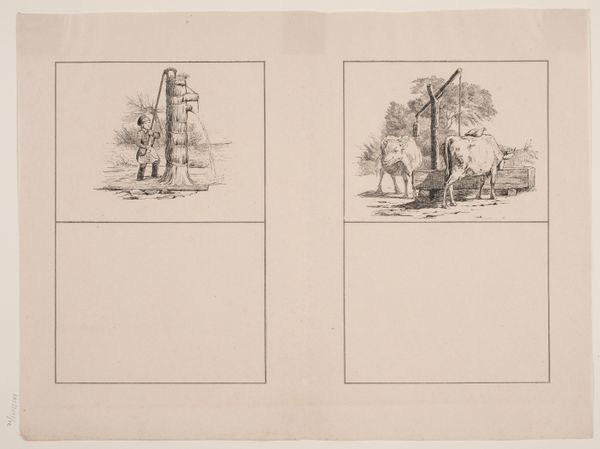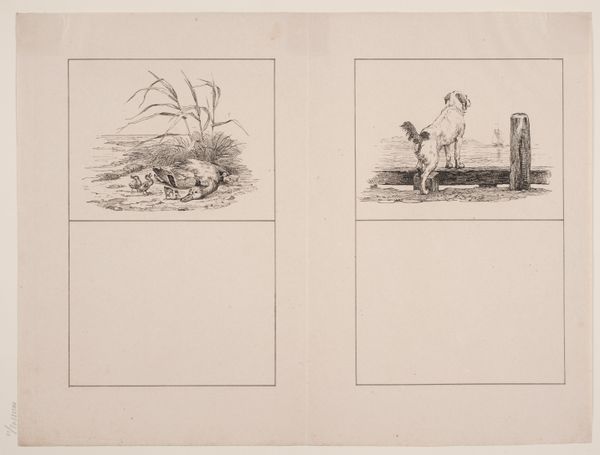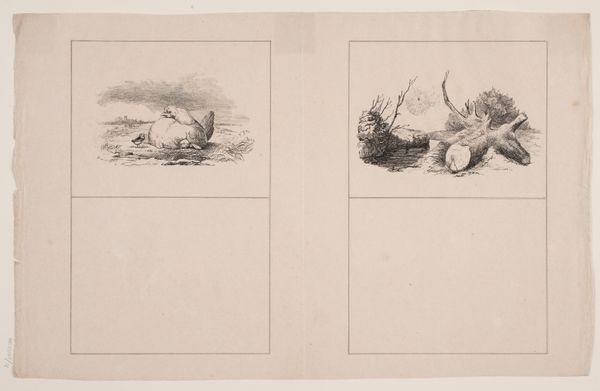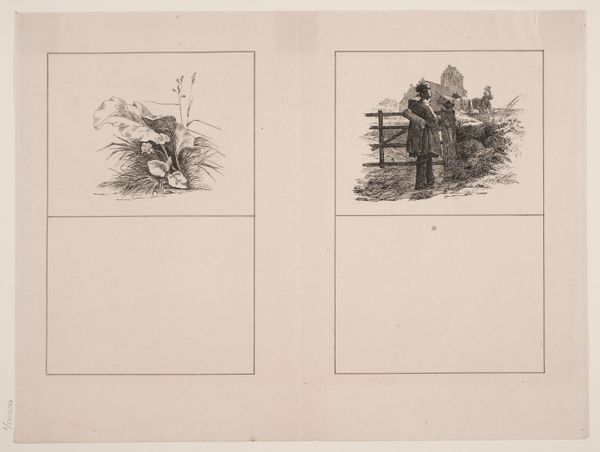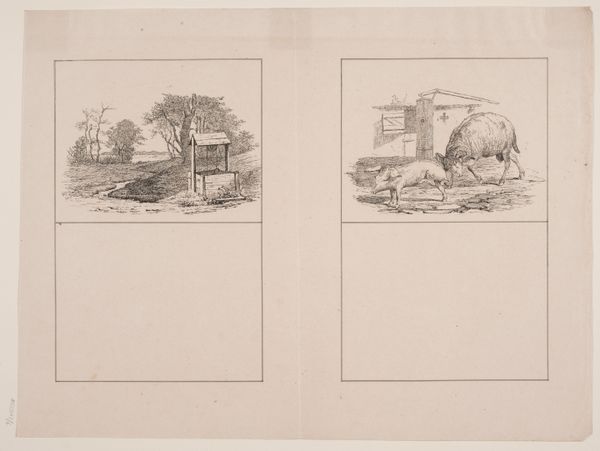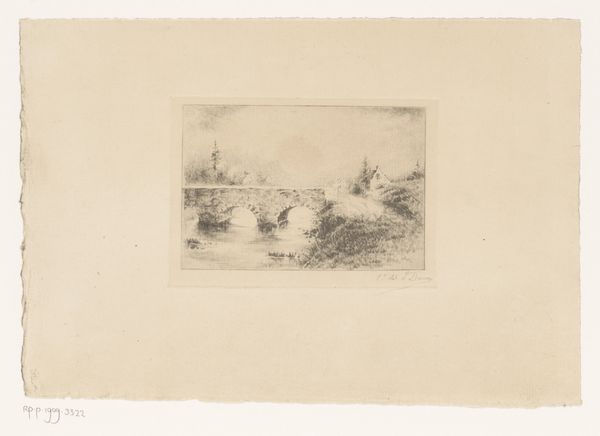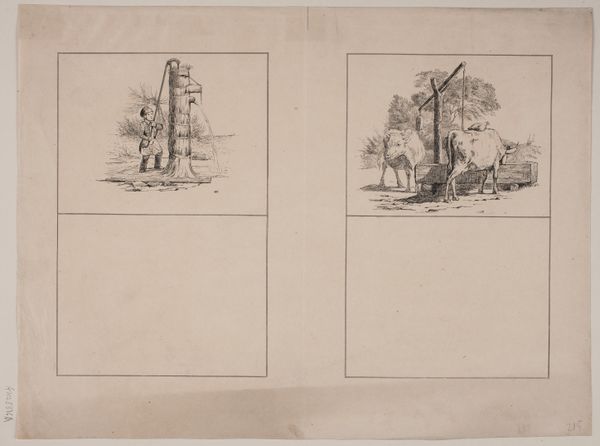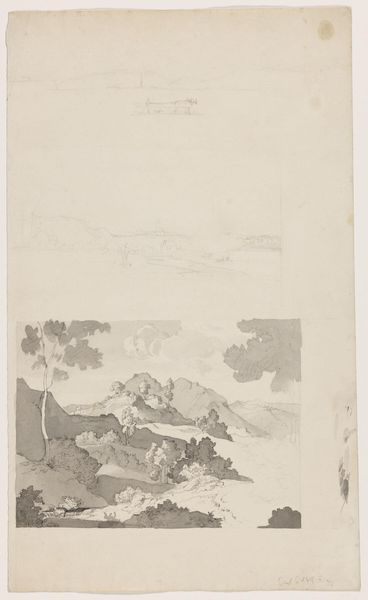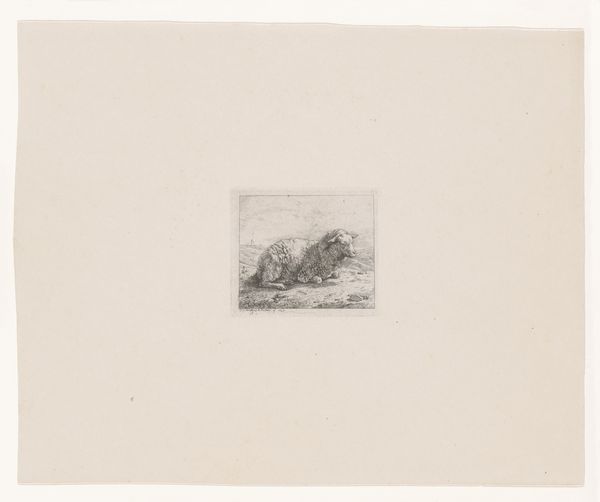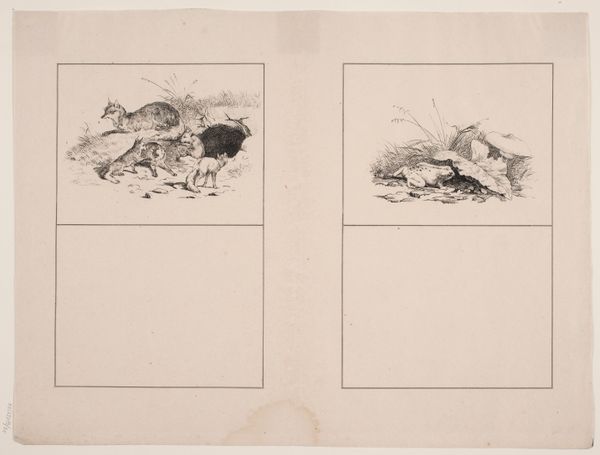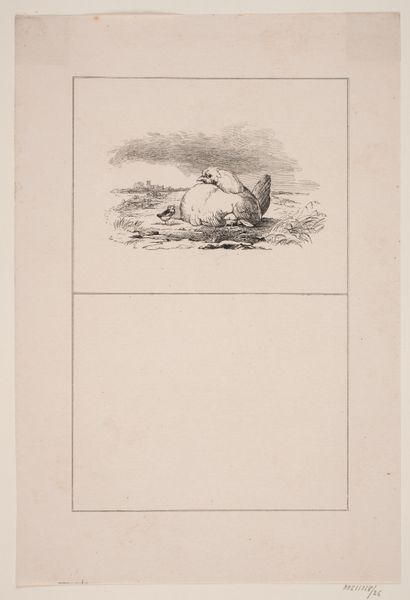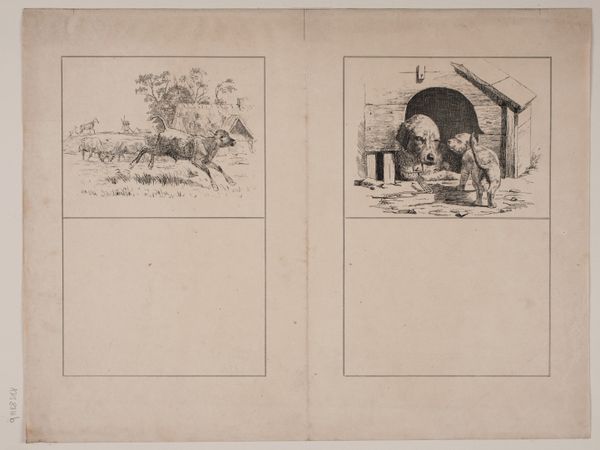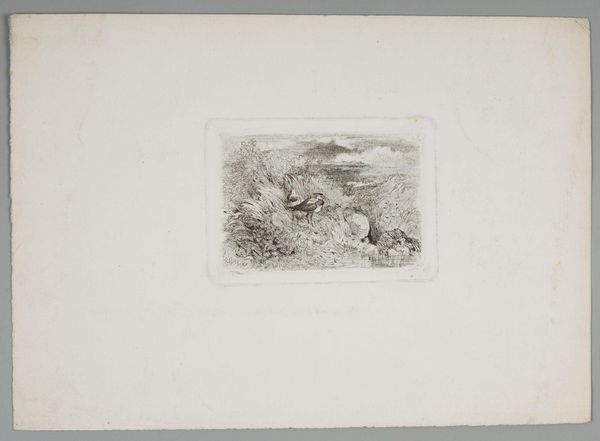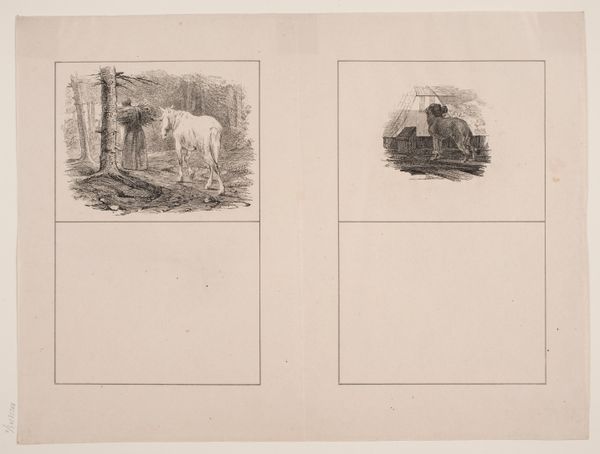
drawing, lithograph, print, etching, paper
#
pencil drawn
#
drawing
#
lithograph
# print
#
etching
#
landscape
#
etching
#
figuration
#
paper
Dimensions: 277 mm (height) x 362 mm (width) (bladmaal)
Editor: This is "Spædkalven; Mågen," which translates to "The Calf; The Seagull," created in 1845 by Adolph Kittendorff. It appears to be a print, perhaps a lithograph or etching on paper. I’m immediately struck by the composition. Two distinct scenes, seemingly unrelated, sharing one sheet. How do you interpret this work? Curator: Interesting observation. These scenes, presented together, invite a symbolic reading. The calf, representing the nurturing, the domestic, life-sustaining, stands in contrast to the seagull, a symbol of freedom, wildness, the untamed spirit of the sea. Notice how Kittendorff renders each scene with careful detail, grounding each image in their respective worlds, one agricultural, the other coastal. Editor: I see what you mean. The domestic versus the wild. So, are you saying the juxtaposition is deliberate? To highlight these opposing forces or themes? Curator: Precisely. The print becomes more than just two separate images; it's a statement. Consider the period, 1845. What aspirations and anxieties might such starkly different scenes evoke in viewers of that time? A burgeoning industrial age, perhaps? Nostalgia for a simpler agrarian life balanced against the lure of exploration and expansion. Editor: That’s a perspective I hadn't considered. It's like a visual representation of internal conflict. This period does have a romantic undercurrent, right? Curator: Yes, you’re on the right track. It invites us to delve deeper into how culture uses and re-uses symbols to tell their stories, over time. Editor: So, reading this piece has less to do with objective details and more with interpreting Kittendorff’s cultural statement? Curator: Precisely. You're not just seeing the image; you're decoding a cultural moment. Remember, images are never neutral. They carry meaning, emotional resonance, reflecting not just what the artist sees, but also how society understands its place in the world. Editor: I hadn't considered it that way. Now it feels less like observing and more like translating! Thanks. Curator: And thanks to you, for seeing the conversation sparked by an image from a fresh, insightful viewpoint!
Comments
No comments
Be the first to comment and join the conversation on the ultimate creative platform.
